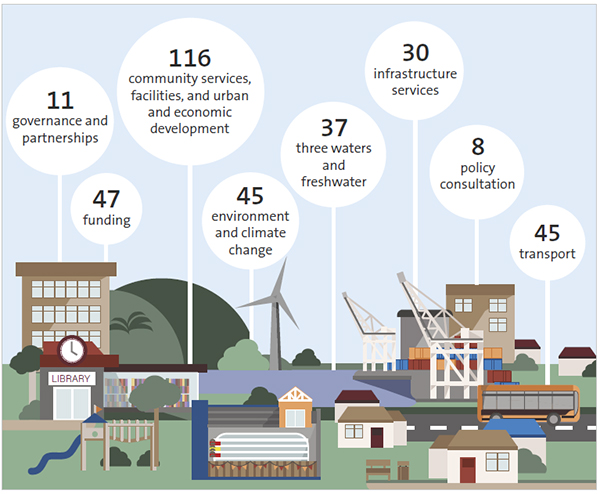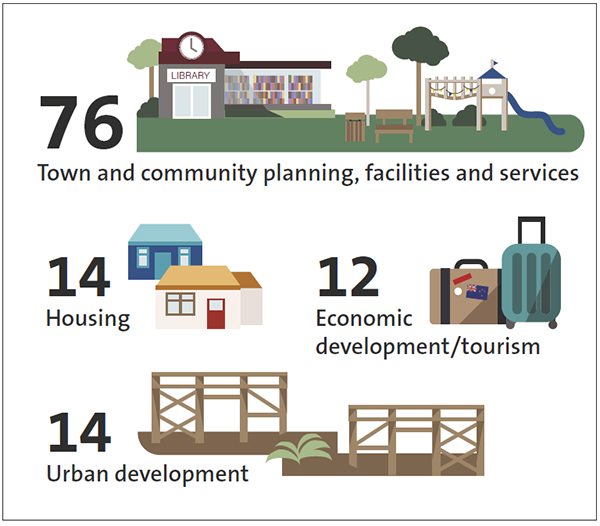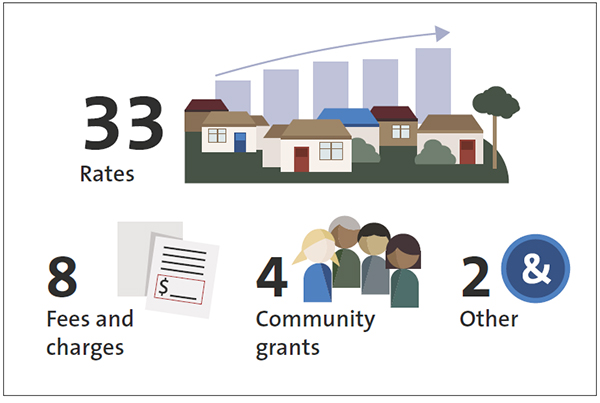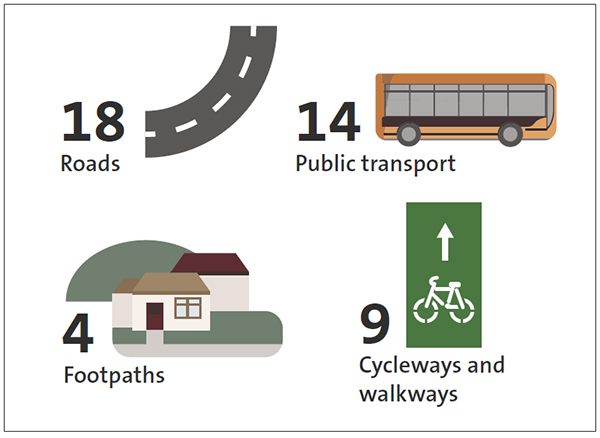Part 3: The types of issues councils consulted on
3.1
In this Part, we discuss the:
- number of consultation issues presented to communities; and
- types of issues that councils consulted on.
The number of consultation issues presented to communities
3.2
We used judgement when collating the issues presented to communities because each consultation document is presented differently. We defined a "consultation issue" as one that presented a range of options and asked for feedback from the community.
3.3
Overall, we counted 339 consultation issues that were presented to the public. The average number of consultation issues presented by each council was four. The number of consultation issues presented by each council ranged from 0 to 15. Northland Regional Council and Hamilton City Council presented the largest number of consultation issues.
3.4
Northland Regional Council presented 15 consultation issues to their community. These issues were grouped around the Council's three groups of activities: natural environment (five issues), community resilience (seven issues), and regional leadership (two issues), and whether the council should contribute funding to a regional conference and events centre (one issue). The response to climate change was the foundation of several of the Council's consultation issues, including flood water protection and water resilience.
3.5
In preparing its consultation document, Northland Regional Council used a consistent visual theme to display the issues. In our view, this would have made it easier for the community to engage with. The Council described each issue on one or two pages. The consultation document overall was 60 pages.
3.6
Hamilton City Council presented 11 consultation issues to their community.10 We found that the Council clearly presented the issues that were being consulted on to its community. The Council included a range of options, the consequences of these options, and the Council's preferred option.
3.7
Palmerston North City Council and Christchurch City Council presented no specific issues for consultation with their communities. Instead of identifying consultation issues with options for the community to consider, these two councils used a series of questions to help guide the reader on the topics the councils wanted feedback on.
3.8
Presenting no issues is an unusual approach for a council to take in consulting on a long-term plan. In our view, having no issues for consultation does not invalidate a council's ability to engage with its community on the content of the long-term plan. However, it is even more important for the consultation document to set out the main challenges and what the proposals are to respond to them. In our view, Christchurch City Council met this expectation and Palmerston North City Council did not (see Part 5).
3.9
In our view, this approach lends itself to a smaller consultation document that is clear and concise in its discussion of what a council proposes to do. Both councils produced longer consultation documents (each was more than 70 pages). We do consider there were opportunities for both councils to reduce the length of their consultation document.
What councils consulted on
3.10
We reviewed the consultation issues where councils presented options to communities and requested their submissions and feedback. Figure 5 shows the types of issues consulted on by category.
Figure 5
The types of issues consulted on in the 2021-31 consultation documents

Source: Our analysis of the 2021-31 consultation documents.
3.11
The largest category of issues that councils consulted their communities on related to community services, facilities, and urban and economic development. There were 116 separate issues on these topics (see Figure 6) raised by 57 councils, of which 76 issues related to town and community planning and the proposal to develop community facilities or other services. Despite the multiple challenges11 facing councils, "place building" was still a main focus for many councils.
Figure 6
The main types of community services, facilities, and urban and economic development issues consulted on in the 2021-31 consultation documents

Source: Our analysis of the 2021-31 consultation documents.
3.12
Unsurprisingly, many councils consulted on specific funding issues (see Figure 7). Generally, these funding issues related to changing the mix of general or targeted rates. In some cases, councils consulted on changing their fees and charges, such as the cost or introduction of paid on-street parking.
Figure 7
The main types of funding issues consulted on in the 2021-31 consultation documents

Source: Our analysis of the 2021-31 consultation documents.
3.13
Figure 8 outlines the type of transport issues in the consultation documents that councils consulted their communities on. Of the 45 transport issues consulted on by councils, 18 related to managing council roads (for example, the amount of maintenance or surfacing completed each year). Of the 45 issues, 14 related to changes to public transportation services (these mostly related to changes to bus services).
Figure 8
The main types of transport issues consulted on in the 2021-31 consultation documents

Source: Our analysis of the 2021-31 consultation documents.
10: Hamilton City Council's consultation document was presented around 10 consultation issues. However, because the Council was seeking its community's views on two separate roading projects, we have counted these as two separate consultation matters.
11: We discuss these further in paragraphs 2.6 to 2.10.

